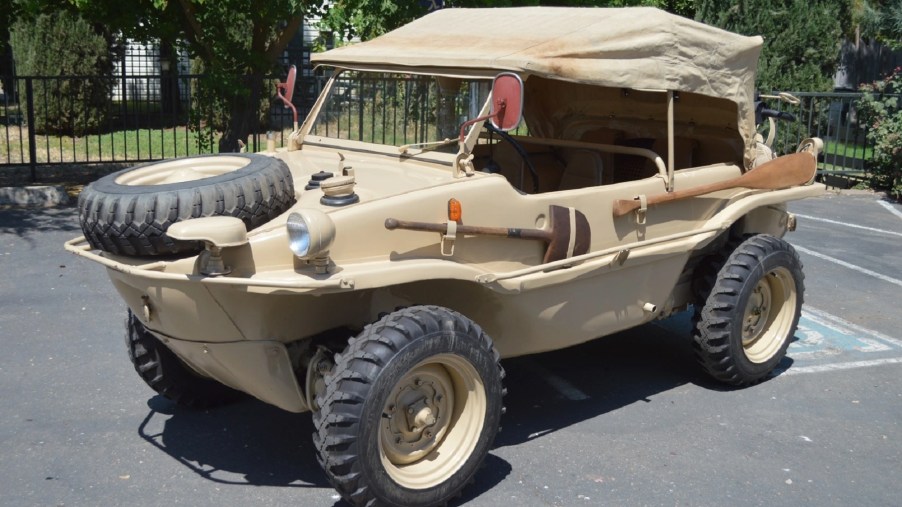
With Beetle Power, This WWII Volkswagen Can Go for a Schwimm
Given its best-selling status, the Volkswagen ‘Type 1’ Beetle’s influence shouldn’t be surprising. It inspired many cars beloved in their own right, like the Fiat 500 and 126p, the classic Mini Cooper, and the Chevrolet Corvair. But the Volkswagen Beetle did more than inspire cars; in some cases, it powered them. The Porsche 356, the predecessor to the 911, uses a Beetle engine. Underneath its stylish body, the Karmann Ghia is essentially a Beetle. And the Beetle’s engine also powered several WWII Volkswagens, including the water-loving Schwimmwagen.
Turning the Volkswagen Beetle into a WWII amphibious vehicle
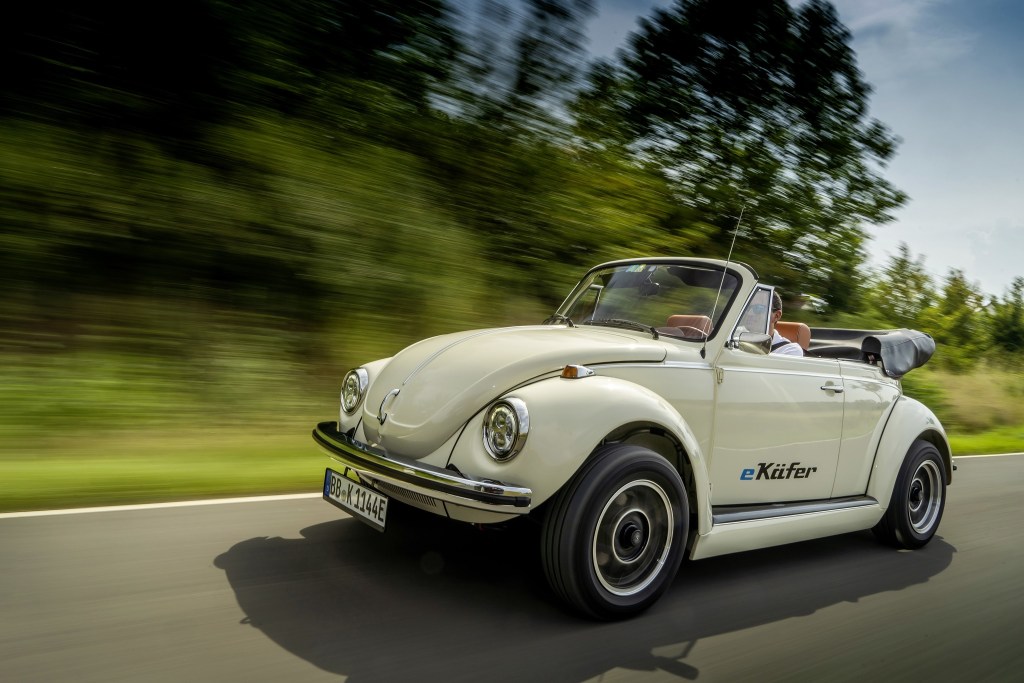
The classic Volkswagen Beetle has some military history, TTAC explains. Although the base car wasn’t designed as an army vehicle, its powertrain and chassis would underpin a few military vehicles.
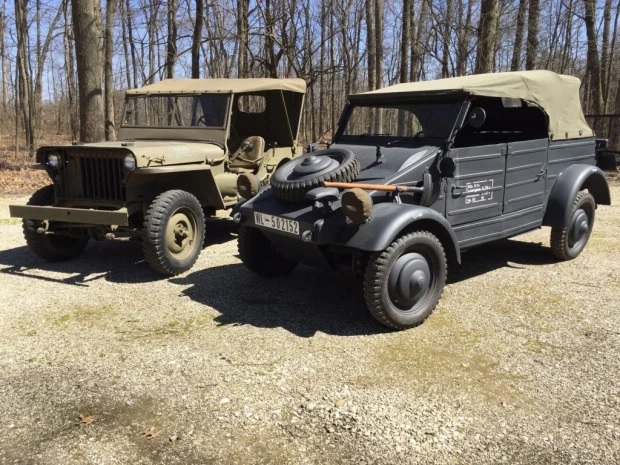
One of the first was the Volkswagen Kubelwagen (‘bucket car’), Classic & Sports Car reports. Later sold in updated form as the Thing, it was basically Germany’s answer to the Willys Jeep.
Unlike the Jeep, the Kubelwagen has rear-wheel drive, not four-wheel drive. But with a locking rear differential, gear-reduction portal axles, and a 1600-lb curb weight, it’s reasonably good off-road, Autoweek reports. Initially powered by a 23.5-hp Volkswagen Beetle 985cc four-cylinder engine, it later gained a torquier 25-hp 1130cc engine.
But, while the Kubelwagen took the Volkswagen Beetle’s powertrain off-road, the military wasn’t quite done with it. As WWII continued, a need arose for an amphibious vehicle. And so, taking the Kubelwagen’s chassis and Beetle engine, Volkswagen created the Schwimmwagen.
The Volkswagen Schwimmwagen is more than a German Amphicar
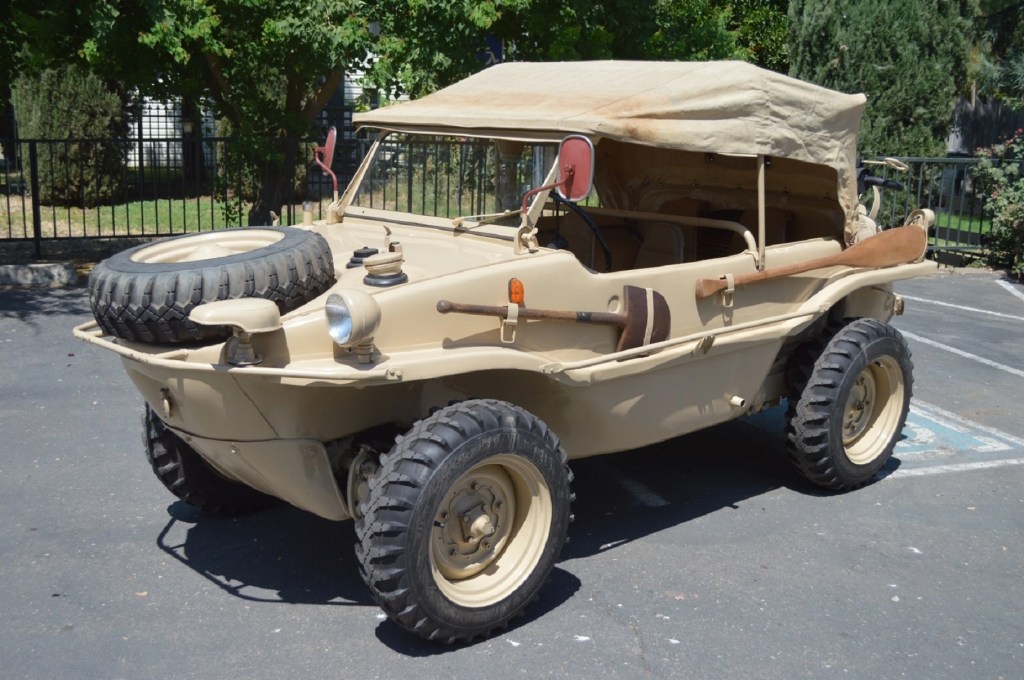
There are actually 2 Schwimmwagen (‘swimming car’) models, Silodrome reports. The early Type 128 was little more than a Kubelwagen with a new water-tight body. However, it proved too weak for off-roading or water activities. However, the later Type 166 rectified these problems.
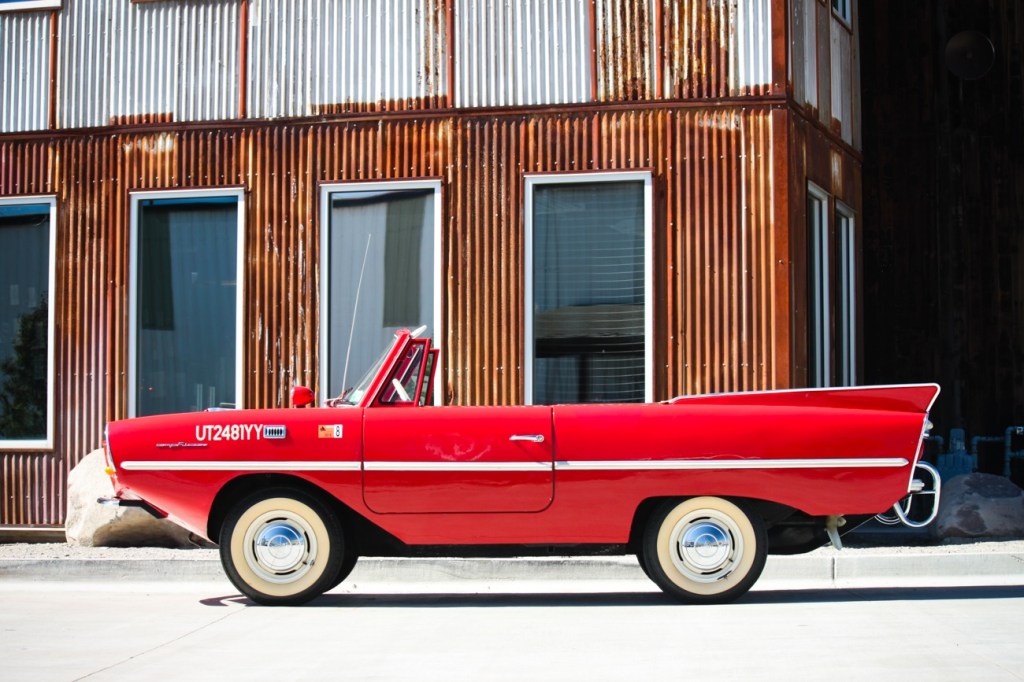
On the surface, both Schwimmwagen models may seem little different than that other famous amphibious car, the Amphicar. In fact, the former inspired the latter, Silodrome reports. Both have rear-mounted engines, and both originated in Germany.
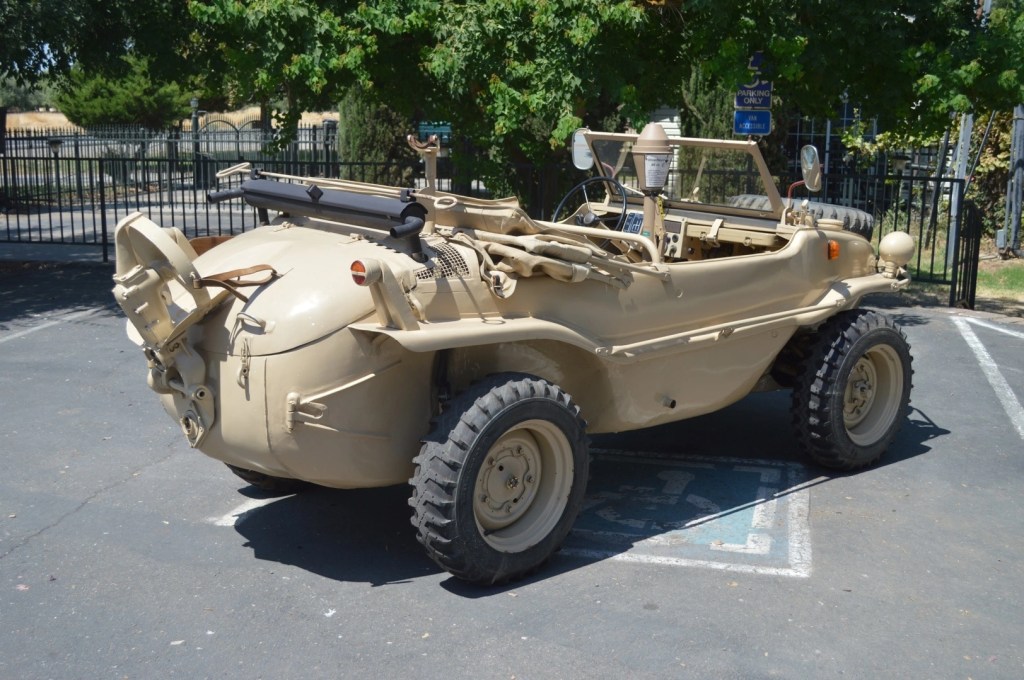
However, the Schwimmwagen differs from the Amphicar in several ways. Firstly, it has 4WD with a 2-speed transfer case, Bonhams, and Bring a Trailer report. And while it has a rear locking differential like the Kubelwagen, it has a front locking one, too. Also, the Schwimmwagen has 4-wheel independent suspension and portal axles for extra ground clearance. It could, and did venture off-road and into the water.
Speaking of water, the Schwimmwagen isn’t necessarily fast in or out of the water. Because of its 25-hp 1130cc Volkswagen Beetle engine and 4-speed transmission, it maxes out at 50 mph on land, Goodwood reports. And in the water, it can’t do more than 6-7 mph. But it was widely used by both sides during WWII, and very successful as a troop transporter and scout vehicle.
Getting one today
Although Volkswagen produced about 15,000 Schwimmwagens, war and time understandably took their toll. Only about 500 of them survive today, roughly matching the surviving Amphicars.
As a result of their rarity and genuine capabilities, Schwimmwagens are significantly pricier than classic Volkswagen Beetles. Today, you can find a well-kept Type 1 for $10,000-$20,000 on BaT. And while restored Beetles can go for around $60k, Hagerty reports, Schwimmwagens are even more expensive.
An unrestored example went for about $95,760 in a 2012 RM Sotheby’s auction. Earlier in 2020, a restored Type 166 sold for $145,600 at a Bonhams auction. And as of this writing, there’s a restored model listed on BaT for $70,000 with 6 days left in the auction.
Turns out, teaching a Volkswagen Beetle how to swim doesn’t come cheap.
Follow more updates from MotorBiscuit on our Facebook page.


